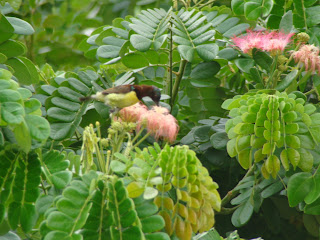A recent Economist article highlights some very important policy and philosophical issues in natural resource management: those concerning what is permissible and prudent for a government to do to protect fragile ecosystems.
http://www.economist.com/world/mideast-africa/displaystory.cfm?story_id=14183069
To sum it up (although I recommend reading this article!), an indigenous ethnic group in Botswana - the San Bushmen - had been granted, on paper, prospects of hunting in their traditional lands of the Central Kalahari Game Reserve (CKGR). Despite this legal success, few, if any, hunters have been granted legal permission to actually hunt in the reserve. Futhermore, several hunters have been recently convicted of illegal hunting in the reserve and prosecuted for this crime, as they were hunting without a permit. This example points to a complex of factors - policy-related and philosophical - that must be taken seriously when deciding how to make natural resource use policy, especially when measures of restriction to lands are on the table.
The philosophical factors of this problem concern whether or not a government has the right to restrict people from use of their traditionally important lands for either of two value-bound reasons: 1) to protect the ecosystems of that land from what damage might obtain from human use; 2) to promote the wellbeing of those who may seek to use said land. Both of these reasons factor into the Botswanan government's arguments for restricting the Kalahari San Bushmen's access to, and use of, the CKGR.
These reasons are duly taken seriously in policy and philosophy circles. Many in the environmental movement would argue that ecosystems are the heritage of all people on earth, not just those living proximate to it. Further, there is the argument that an ecosystem itself may be an object of ethical significance. Both of these arguments have led to the policy goal of protecting (also perhaps restoring or conserving) ecosystems. The second reason is an example of the paternalistic approach to justifying policy. Although harsh sounding in name, paternalism - the view that it is permissible to restrict its citizen's liberty for their own wellbeing - as a policy approach is not at all uncommon. A popular and uncontroversial example in the U.S. includes mandatory seatbelt laws. In this case, the claim is that San Bushman are led into a lifestyle of poverty with scarce feasible livelihood opportunities if given permission to hunt in the CKRG.
The policy concerns around such issues are equally complicated. Will restrictive policies actually keep the San, or anyone else for that matter, out of CKRG? Is there any evidence that such restrictive policies benefit ecosystems including those of the CKRG? Also, is there any evidence that the San might do better if they are restricted from pursuing livelihoods based on hunting in CKRG? Unfortunately, in so many cases the world over there is no evidence that these policy outcomes obtain from restricting people from the lands they are accustomed to living on. So, despite the philosophical problems raised above, empirical evidence must be brought to bear on how likely restrictive policies are to achieve their desired goals, and on the possible unintended consequences of these policies for ecosystems and people.
There is also a flip side to each of the philosophical coins introduced here. On the flip-side of the paternalistic argument to keep the San from hunting in the CKRG, we must also consider whether the San Bushmen, or other groups in similar situations, have the right to determine their own course of action in land-use and provision of livelihood opportunities. On the flip side of protecting ecosystems, there is also the serious view that people who are most proximate to, interact with most, and have the greatest stake in ecosystems should have more of a say in how they are managed, despite their value to others.
As for the view that ecosystems themselves are ethically significant: a colleague of mine tells a story about working on a conservation project in Nepal wherein local peoples said that although they would like to participate in conserving ecosystems, it was difficult to concentrate on this task with empty stomachs. That is, when people's daily needs are not met and quality of life is low, they will certainly use ecosystems to survive over conserving them, no matter how much they also might want to protect the lands they love.
Unfortunately, natural resource policy is not often enough made on the basis of evidence nor on genuine philosophical grounds, but instead for reaching political ends. Ecosystem conservation, while entirely important, is often carried out in developing nations to please international donors or to veil, however thinly, commercial interest in keeping natural resources abundant and healthy, as in the case of forest conservation for timber value in South Asia. In the Botswana case, the Economist speculates that the government's agenda is one of forcible advancement of the San due to embarrassment in the government over their traditional ways, something that is feared might cloud the image of success portrayed by Botswana in other sectors.
Human development and ecosystem conservation are both worthy, nay necessary, policy aims and can be met simultaneously if carried out wisely. The kind of wisdom necessary to meet these aims, however, will come from alignment of natural resource and social welfare policy that is informed by evidence and not politics.






















